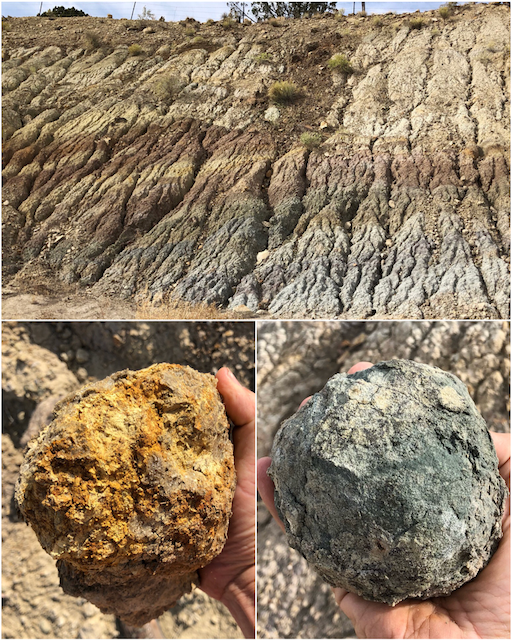
Making Paint Step 1: Collecting Pigment Stones
Welcome to the first of a series of blog posts to help folks understand what is behind the all natural mineral pigments that I make. This post will tell you how I find and collect pigment stones. Most people ask a variant of the same question when they see my colors:
- How did you think to do this?
- How do you find these colors?
- Can I use just any stone to make pigment?
Why?
I’m sort of a “history of technology” fanatic. I have always been extremely interested in how things were done before modern technology made it all so easy. I love exercise, hard work, and the physical results of doing things in old ways. Prior to the industrial revolution and modern chemistry, people used all natural pigments for painting and printing. Michelangelo used powdered stones and milk to paint the ceiling of the Sistine Chapel. The old European Masters used oil with their natural pigments to make their paint. The earliest evidence of painting that we have found used iron oxides to make colors that have lasted for tens of thousands of years. Synthetic pigments are a very recent invention in the timeline of art history.
How?
How do I find my pigment sources. I’m extremely blessed to live in a place with an extremely varied geology and little vegetation to hide the colors from sight.
Driving…
As I drive around I keep half an eye locked onto the landscape looking for any variations in color that could indicate some interesting geology. Here are some of the things that catch my attention while I’m driving:
Here, the water eroded an arroyo through an iron-rich landscape. When I see things like this, I know that I can find reds and deep browns.
Here’s another bank, this time mudstone. It forms in layers which can vary wildly in composition. These layers originally formed at the bottom of a large body of water and contain whichever minerals and clays were deposited in the water at the time. In this photo you can see three different colors – the yellow-green mudstone, a few layers of harder dark green mudstone, and a few little spots of orange ochre.
Another feature of the New Mexico landscape are the “Rainbow Mudstone” deposits. They contain many layers of varied ochre pigment layers in close proximity. These banks are often revealed when roads and railroads are cut through the hillsides. Since crews with giant equipment and dynamite have already disturbed the area, it’s more ethically sound to collect from these sites. One stone or baggie of soil will make no real difference to an area like this.
Hiking…
I also hike A LOT. I spend many hours in the arroyos and on the mesas near my home in Madrid, New Mexico. This town was a center for the mining industry in the area and contains some of the richest geology I have ever seen.
When I hike down the Arroyo in town, I find all kinds of minerals like this exposed seam of rich, black coal. Guess which of my paints is made from this!
While I hike, I find it very rewarding to pay attention to the tiniest details underfoot. I will find small deposits like this orange limonite in an area that is otherwise predictable. I this case, as I hiked across a field of purple clay I found one very thin seam of orange ochre that had broken up into the soil.
In a nearby town, I went hiking in an arroyo near an old iron mine, hoping to find some small pieces of crumbly iron ore. This place looked just like any other arroyo until I started really paying attention to the dark pebbles.
To test whether a given pebble is soft enough for me to powder for its color, I rub each pebble on a harder stone to see how easily it rubs off and what color it gives. I this case, you can see that some stones left white scratches (showing me that they’re too hard to powder) and others left deep purple, almost black lines. So the answer is no, not every stone can be used to make natural pigments. The softer stones make better pigments and are much easier to process.
By the end of the day, I hiked out with a backpack that was heavy with these beautiful pigment stones.
In my next post, I will show you how I use these pigment stones to make heavily pigmented powders. CLICK HERE to read it.

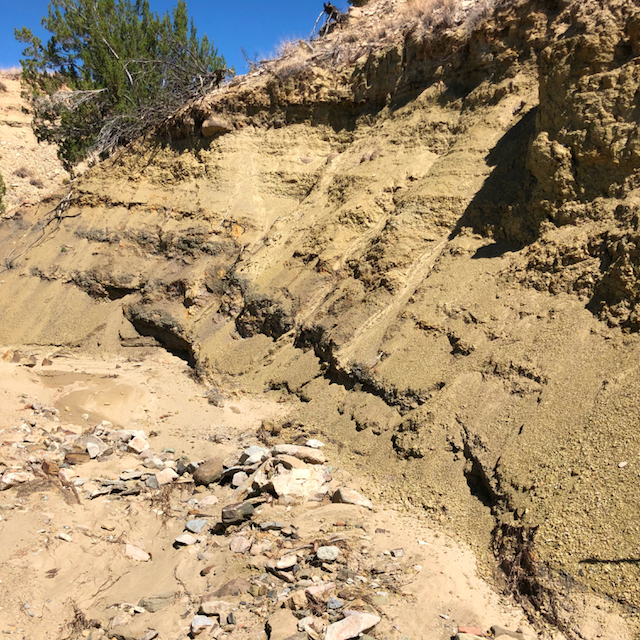
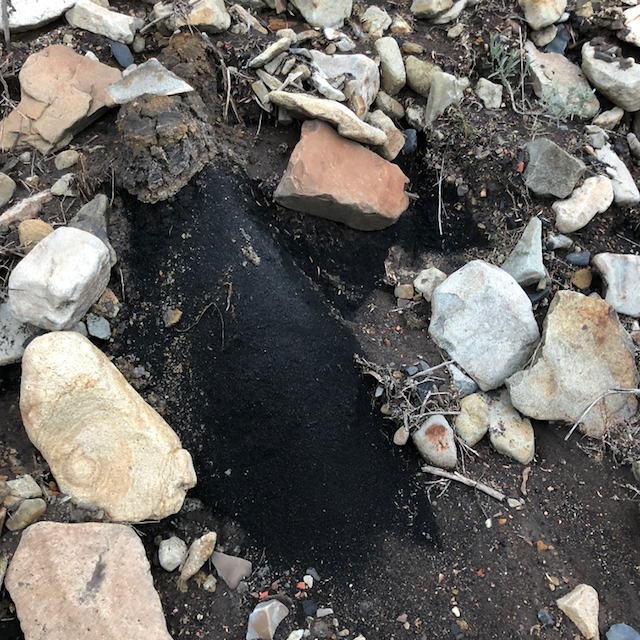
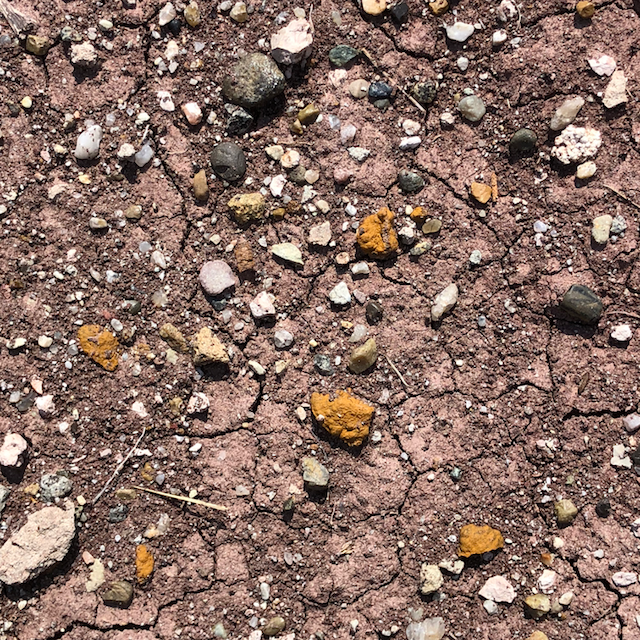
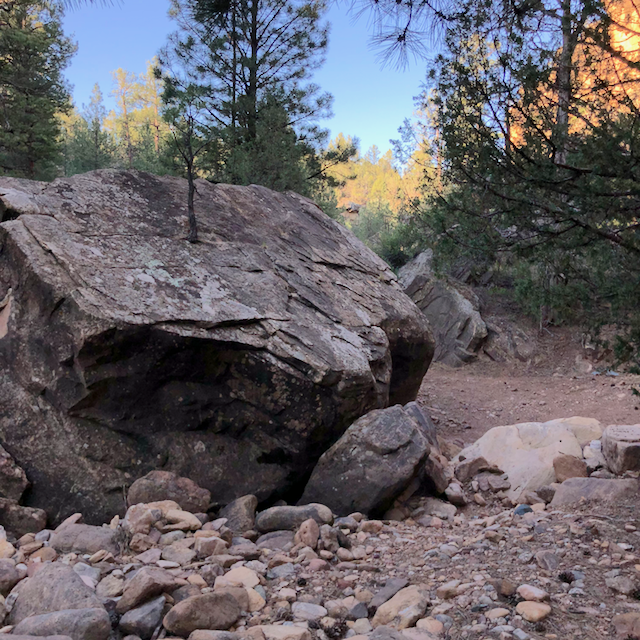
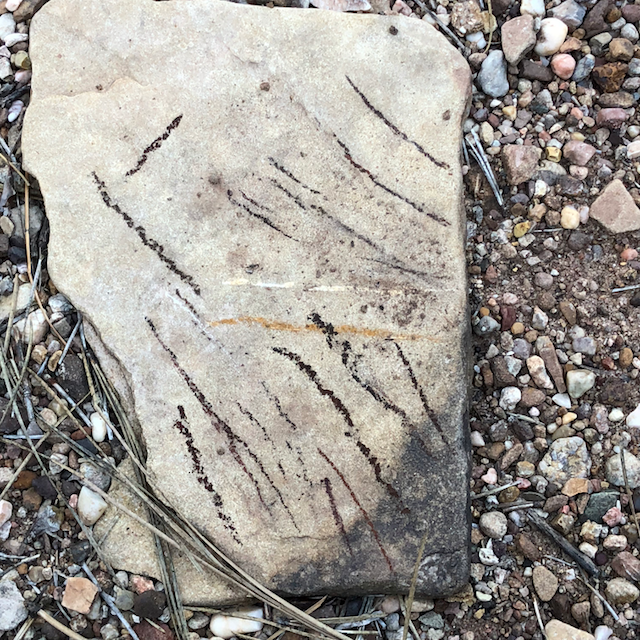
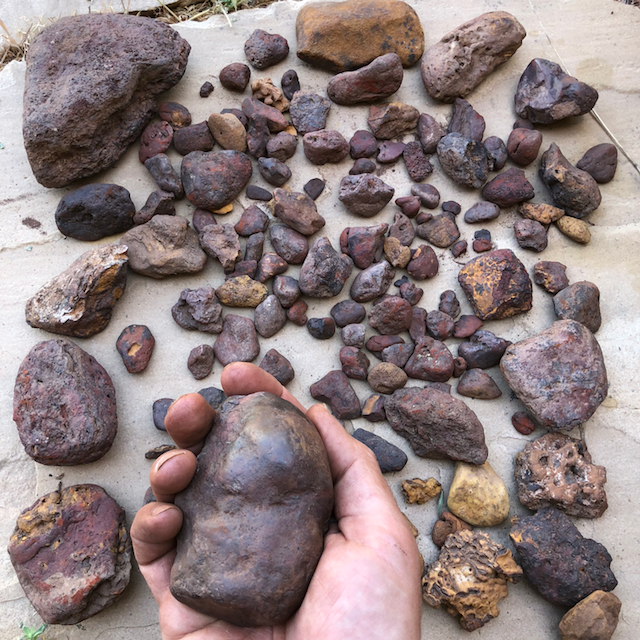
Lorraine Brigdale
October 31, 2018 at 4:24 pmThankyou for your blog, it’s nice to see what others are doing. I live in Australia and when I collect for my pigment collection I make a small request to the ancestors/country before I take some stone or dirt. It’s about respect for our environment which was cared for by the old people and respect for the country. Thankyou always comes after the collection.
Blossom
November 2, 2018 at 9:10 amHi, Lorraine. I have a similar practice of connection and respect for the history and the places that I visit to find these pigments. For now I am keeping my private spiritual practices out of my blog. Maybe one day I’ll write about that side of things.